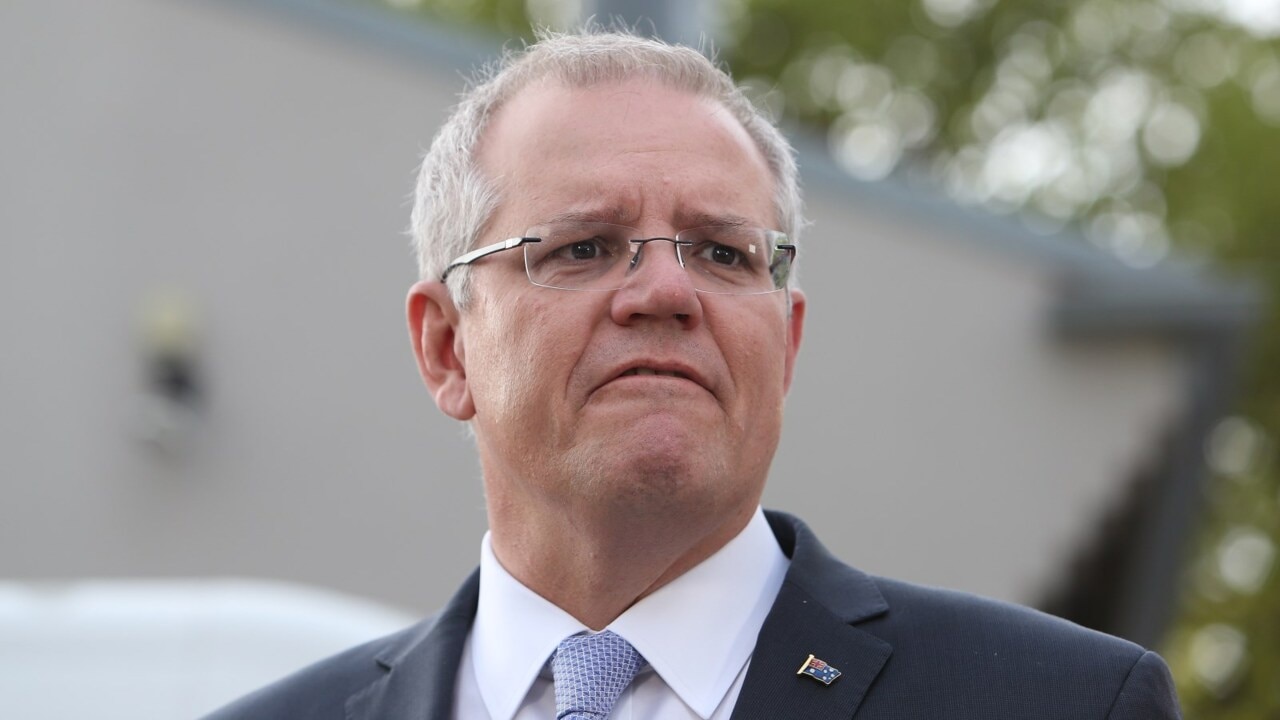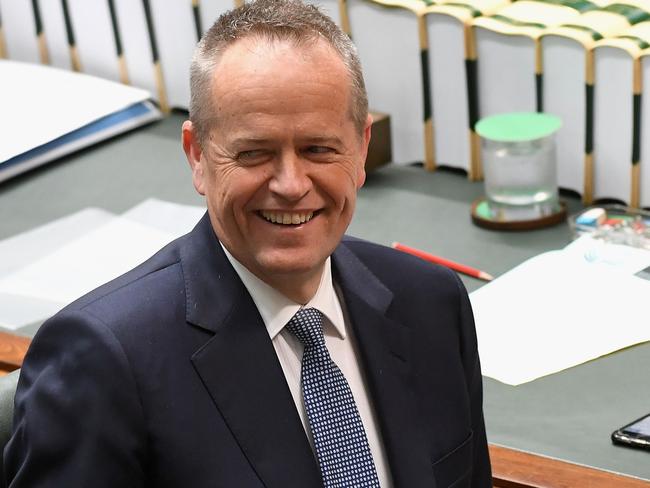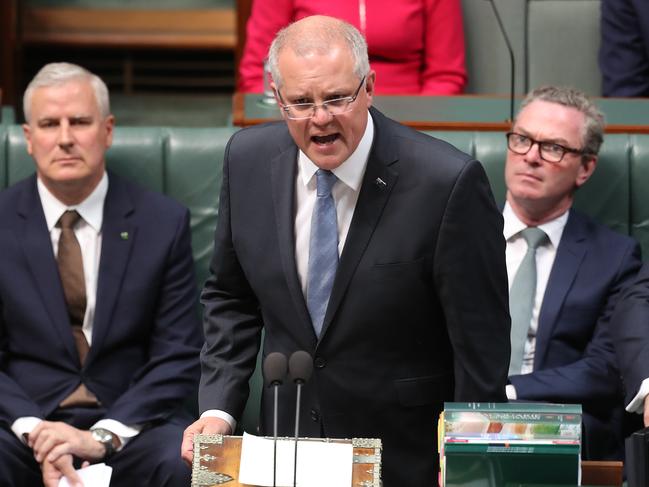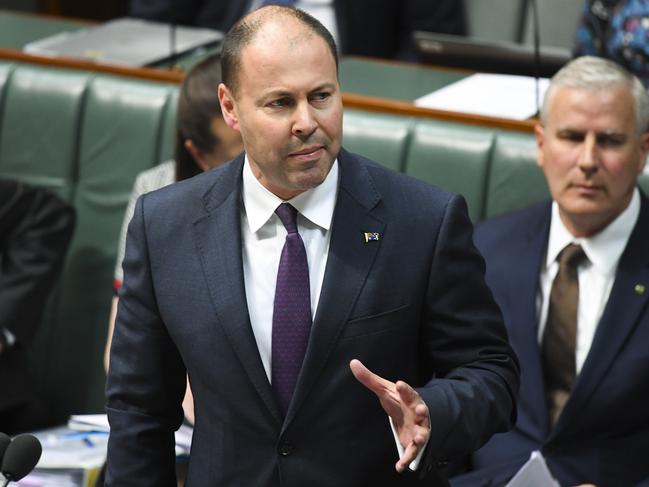Terry McCrann: Start preparing for a Shorten-led Labor federal government
The Morrison Government will lose seats in Queensland because it’s not right wing enough and it will lose seats in NSW and Victoria because it’s not left wing enough, writes Terry McCrann.

Terry McCrann
Don't miss out on the headlines from Terry McCrann. Followed categories will be added to My News.
The Morrison Government is going to lose seats in Queensland at next year’s federal election because it won’t be right wing enough. And it is going to lose seats in NSW and Victoria because it won’t be left wing enough.
This is the one absolute and absolutely undeniable — and for the Coalition, unsolvable — reality that emerges from the various elections this year, culminating in the Victorian state one on Saturday.
LABOR’S BACK-TO-BASICS CAMPAIGN STRATEGY PAID OFF
CARBON PRICE COMEBACK IF LABOR WINS NEXT FEDERAL ELECTION
As the government can’t afford to lose a single seat, and indeed it can’t really even afford to finish square — and it sure as hell ain’t going to be sweeping the three small states, WA, SA and Tasmania — this reality leads to one undeniable conclusion and one piece of very, very strong advice.
Simply, start preparing for a Shorten-led Labor government. All those policies that have been unveiled by Bill Shorten and Labor will be delivered.

They will be delivered either by a Labor-Green combination in the Senate or a Labor-Green odds-and-sods combination.
The two biggest and potentially most destructive are the commitment to go for broke — and that word is used very deliberately — on so-called renewable energy; and the three-pronged attack on investors and investment led by the attack on negative gearing.
Each of these policies in isolation will create its own dynamics. But it is the combination of all them operating together which will prove most potent.
That potency won’t just be negative. It won’t be all black for investment. Quite the reverse in some cases — like, at least initially, a boost to new home and apartment building, and wind and solar installations.
You need to understand the big picture impact — from electricity and gas prices and supply, to the broad impact on the two major investment sectors of residential property, including the single most important: the family home and shares.
‘RIVERS OF GOLD’ POURING INTO AUSTRALIA’S ECONOMY
You need to also understand the more specific impacts across these categories. In property, it’s the way the Labor policy would encourage new building but at the same time make more valuable an existing negatively geared property and even more so the family home.
Just take the last: because all forms of investment property will become less attractive under Labor (albeit, with varying degrees of unattractiveness and depending whether or not they are pre-owned), it will make sense to keep upgrading the family home.
Every time you sell it, the profit remains totally capital gains tax free, when the CGT will be going up — under the second Labor “prong” — on everything else, once the grandfathering of existing owned investments wears away.

The third “prong” is Labor’s proposed end to the refunding of excess franking credits. This will obviously hit investment returns. It will also encourage some shift to investing overseas or to domestic alternatives to shares that pay fully-franked dividends.
It will also make it harder for Australian companies to raise fresh share capital.
The commitment to get to 50 per cent renewable power by 2030 will have a range of immediate impacts on investment opportunities and decisions. It will clearly be a big boost to that sector, but most of the “stuff” being bought will be from China.
The policy is also in effect a commitment to accelerate the closure of the remaining coal-fired power stations and not replace them with either new-generation coal or nuclear.
At the moment, everyone is consumed with the planned closure of the Liddell station in NSW in the early 2020s. Not only would that closure become certain under a Shorten government, but other stations would quickly follow.
This is all now pretty much baked in because there is no way the incumbent government is going to be able to extricate itself from the coming obliteration.
It won’t be able to “buy itself” out of the right-wing/left-wing dilemma — tacking to the centre would just lose both ways — with a big-spending, pre-election Budget off the back of the first Budget surplus since 2007-08.

It looks all but certain that the Budget will be back in surplus this year ahead of the last predicted small surplus in the 2019-20 year.
We will find out when Treasurer Josh Frydenberg brings out the mid-year update next month.
This will show strongly increasing surpluses in the 2019-20 and later years — and a desperate government will set about immediately spending most of them.
But, they will only be predicted surpluses built on assuming the economy will keep growing strongly.
It’s my long-range prediction growth will falter — partly, but only partly because of the anti-investment policies of the new Labor government.
Growth was going to “disappoint”, especially the experts and forecasters.
The Budget will head straight back into probably deep deficit. We will go back to a 2008 future, “modified” — and by that, I do not mean improved — by the Shorten Labor government.
BIG BANKS ARE A-CHANGING
ADD to that outlook all the ripples — in truth, probably more like continuous tsunamis — that will flow from the banking royal commission whose recommendations will be acted on by a Shorten Labor government which wanted it, not a Morrison Coalition government which didn’t.
Most of the focus will be on what the changes mean for customers. But there will also be big changes for bank shares as investments.
Again, these are going to collide with the other changes Labor will deliver.
The four big banks are the biggest component of the Australian share market.
They have also been the most reliable investment, particularly since the GFC.
They have been the best at paying fully franked dividends. And of course, funding negative gearing.

